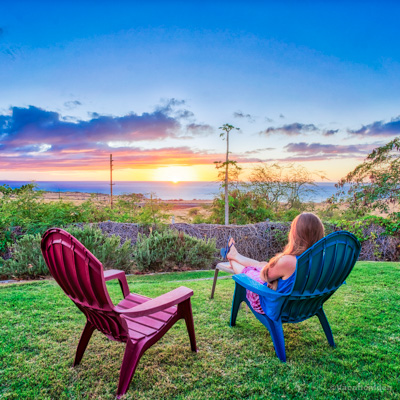Best Secluded Romantic Getaways

Searching for the best secluded romantic getaways? You are in the right place! I find that sometimes the best trips are the ones that take you away from it all, the quiet places where we can relax, reconnect, and simply enjoy being together. I think that these getaways below offer the perfect mix of privacy, beauty, and unforgettable moments that I hope you get to experience too.
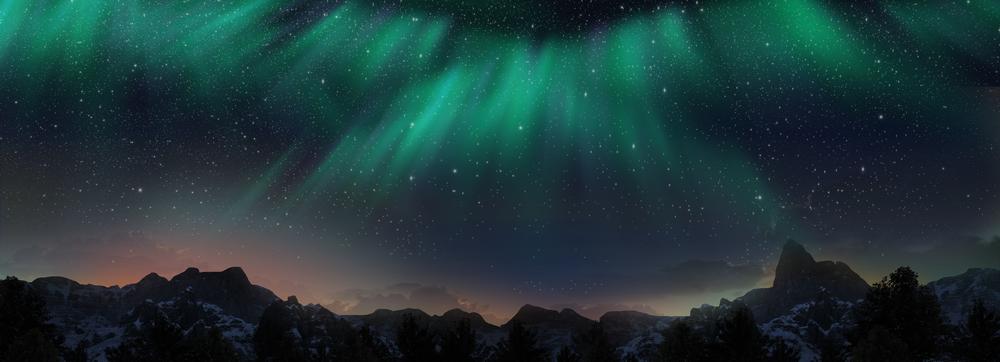
1. Hotel Ranga, Iceland
This is easily one of my favorite secluded romantic getaways, surrounded with scenic countryside of South Iceland near Hella! In fact, I felt like we had discovered a hidden gem here, far removed from the busy tourist spots in the "Land of Fire and Ice".
After landing in Reykjavík, and then driving about 2 hours southeast from the capital, Chris and I arrived at what would quickly become one of coolest secluded romantic getaways!
Now, first things first, from the moment we arrived at Hotel Rangá, I was captivated by the unique log cabin-style architecture. In addition, the wide open landscapes and volcanoes (and glaciers!) in the distance made me feel like I discovered a magical world!
Our room for three amazing days was inviting, with our outdoor hot tub being my favorite spot! So, at night, we had the coolest experience stargazing. In addition, sometimes you can even catch the Northern Lights by just stepping outdoors!
- Location Map
- Check prices or availability at Hotel Rangá
What I loved best:
The restaurant onsite was my personal highlight! I loved that we had a chance to try local Icelandic cuisine for the first time. I recommend going for the hearty soup (kjötsúpa) and hangikjöt (smoked lamb), both a standout and, for me, a great way to warm up at the end of the day!
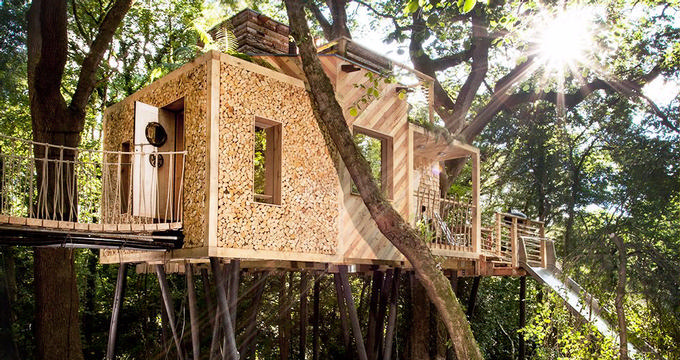
2. Mallinson's Woodland Retreat in Dorset, UK
This has to be one of the coolest and most unusual places I’ve ever stayed in. I can can personally guarantee that it's romantic, and best of all, it's eco friendly! Hidden deep in the woods near Lyme Regis, I felt like I was stepping straight into a fairytale. In addition, it was so peaceful, with even a touch of magic, and it quickly became one of my favorite romantic getaways across the pond!
After spending the holidays in London, we drove out in the late morning for 3.5 hours, easing past the city’s edges and then through winding country roads. (I loved that the drive itself was scenic!).
We stayed in one of their unique treehouses for five blissful days, and it honestly this place felt like the best mix of childhood dream and grown-up luxury. I loved waking up surrounded by towering trees, birdsong, and the smell of fresh woodland air!
Mallinson is full of unique touches that make your vacation special. My favorite features were the wood-burning stove and outdoor hot tub!
- Location: Dorset, England, in the Blackdown Hills near the village of Holditch, close to the Devon–Somerset border
- Location Map
- Check prices or availability at Mallinson's Woodland Retreat
What I loved best:
We spent our days exploring Dorset’s countryside, walking along coastal paths, and enjoying the local food scene, a real standout. While it was exciting to have so much to do nearby (I especially liked Corfe Castle and Old Harry Rocks), we kept wanting to return to our woodland hideaway because it felt so peaceful.
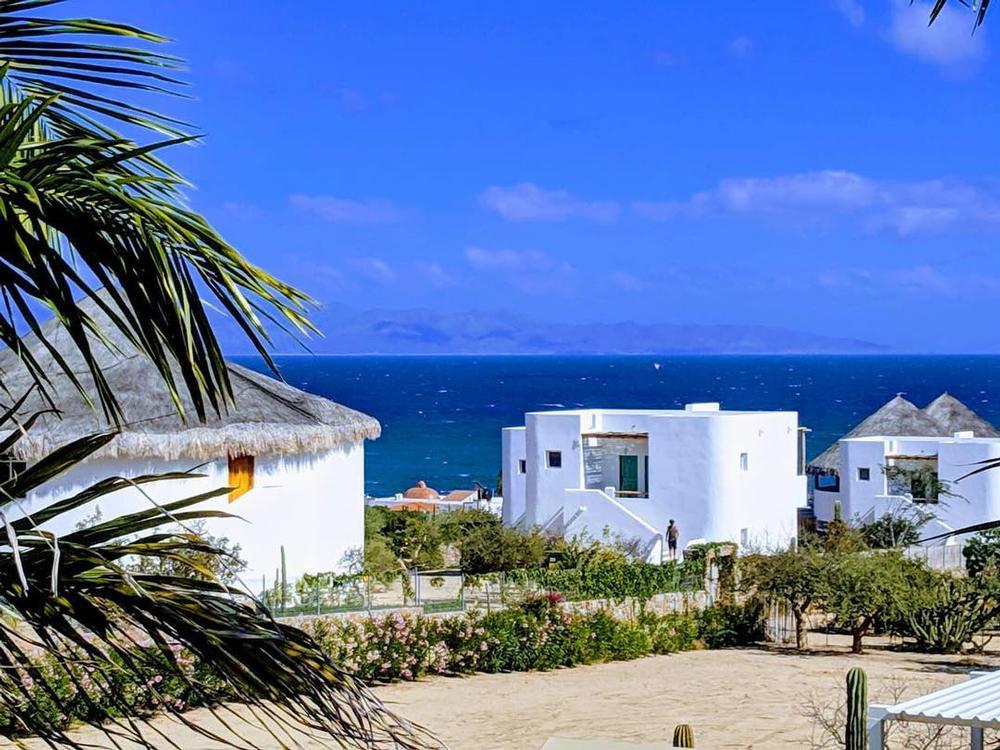
3. Casa Tara Retreat
This was one of those magical discoveries that instantly became one of my favorites for a underrated secluded romantic getaway in Mexico this month!
To get here, we flew from Austin to Cabo San Lucas, rented a car at the airport, and drove 2 hours and 15 minutes to Casa Tara Retreat. We found it on the Sea of Cortez near the peaceful town of El Sargento, and I imdiately admired how this place feels like a hidden gem where desert meets turquoise waters.
Our room here for three relaxing nights felt like a sanctuary (romantic, airy!) and I thought it was the perfect place to celebrate my husband's birthday. Best of all, it was just steps away from the beach so I absolutely loved waking up to the sound of waves, and then seeing the ocean right after. In addition, catching the most awesome sunrises over the water was easy here (I'm an early riser!).
I thought that the food at Casa Tara was exceptional because every meal felt fresh and nourishing. In fact, I could feel my body rejuvenating with the combination of sun, lots of naps and great food.
I loved that there was so much to do in Cabo San Lucas, though just a heads ups, for a first time visitor I highly recommend a local tour to make the most of your time here and get insider local tips.
- Location: Baja California Sur, Mexico, on the Sea of Cortez in the town of El Sargento near La Ventana
- Location Map
- Check prices or availability at Casa Tara Retreat
What I loved best:
The wellness experiences were my favorite highlight. I started with a yoga session overlooking the ocean, headed to the spa for a holistic 60-minute massage, and enjoyed quiet time by the infinity pool after. I loved that everything felt designed to restore balance and create romance here and I hope you will enjoy it too.

4. Hotel Gotthard in Lech, Austria
We absolutely love Lech, Austria, and have been many times. I've always loved getting away to the mountains but even if that's not your usual choice, I wholeheartedly recommend this romantic getaway in the heart of the Austrian Alps. We drove out of Innsbruck (where our flight landed) for 1 hour and 40 minutes to reach Hotel Gotthard in Lech which quickly became one of my favorite secluded romantic mountain escapes.
Nestled in the heart of the Arlberg region, this family-run gem was super unique, where I could feel its tradition and appreciated the modern comfort at the same time.
From the moment we arrived, I felt the warmth of Austrian hospitality at Hotel Gotthard which enjoys a spectacular location right in Lech. It was so lovely being surrounded by snowy peaks in winter and wildflower meadows in summer when we visited for dreamy five days.
Our room was spacious, light-filled, and so inviting, with touches of alpine wood, soft linens, and mountain views all around. I especially appreciated the well-stocked spa style bathroom designed for relaxing after a day outdoors.
The wellness area at Hotel Gotthard was unforgettable and we spent hours here, rotating between the indoor pool, sauna, and steam bath...I thought it was one of the coolest features for couples looking to unwind.
- Location: Lech am Arlberg, in the Austrian Alps of Vorarlberg, along the Arlberg mountain pass
- Location Map
- Check prices or availability at Hotel Gotthard
What I loved best:
The food was exceptional starting at breakfast featuring fresh bread from their own bakery, regional cheeses, and homemade jams. Dinners here were equally amazing, with Alpine flavors elevated into something truly special, perfect for a romantic evening in the mountains!
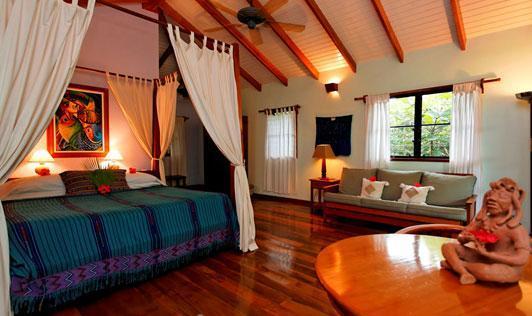
5. Hamanasi Adventure & Dive Resort in Belize
If you want to combine romance and diving, this all-inclusive resort in Belize is easily one of the most unique places I’ve ever stayed. Hamanasi is situated along the Caribbean coast in the town of Hopkins, where rainforest meets reef!
We loved how the resort sat right on a stretch of golden beach, with turquoise waters in front and lush jungle behind.
Our room for four blissful days was spacious and romantic, with local wood details, and a breezy private veranda. I loved waking up to ocean views and falling asleep to the sound of waves...it felt like a dream come true.
- Location: Hopkins, Belize, on the Caribbean coast between Dangriga and Placencia, with easy acces
- Location Map
- Check prices or availability at Hamanasi
What I loved best:
We spent our days snorkeling along the Belize Barrier Reef, exploring Mayan ruins, and trekking through the rainforest.
My favorite highlight was the food here...fresh, flavorful, and creative, featuring local ingredients and Caribbean flair.
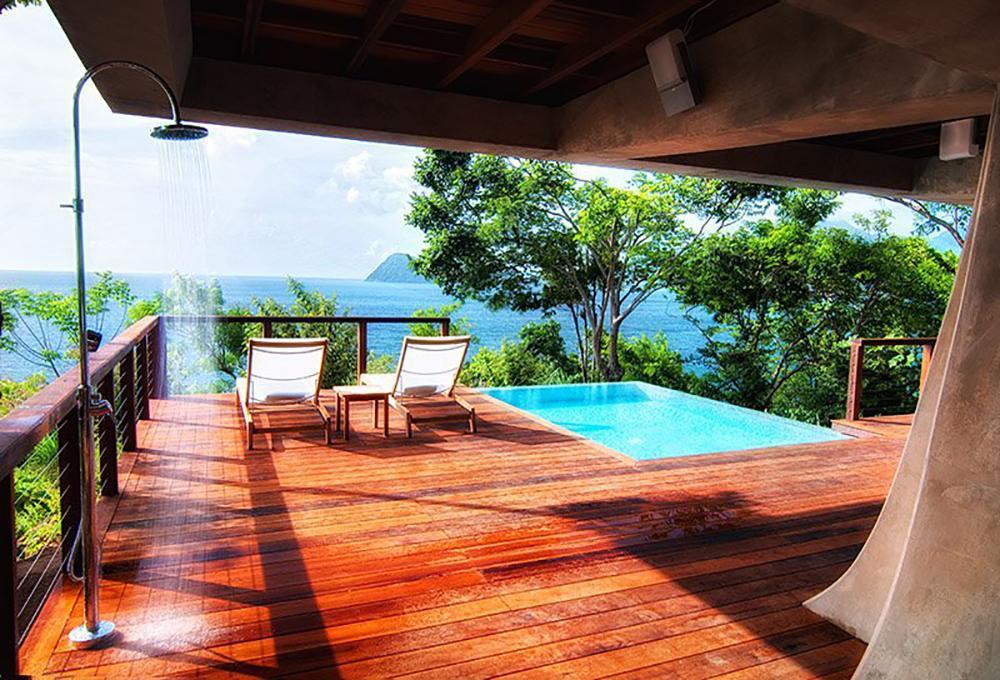
6. Secret Bay: Rainforest Seclusion & Ocean Light
This has to be one of the most spectacular romantic escapes I’ve ever experienced in the Caribbean. Why? We loved having lots of privacy privacy, luxurious villa, and great food at every meal.
We flew into Dominica (connection from Antigua), and then drove 1 hour 15 minutes north along winding mountain roads through rainforest, and finally ending at the sea.
We stayed in one of the gorgeous villas for five days which I thought was the absolute best mix of modern design and natural beauty. I adored the forest setting, our private plunge pool, open deck where we did a lot of relaxing, and sweeping ocean views... it felt like our own hidden paradise.
The food at Secret Bay was exceptional and dining under the stars with the ocean breeze was one of the most romantic and joyful memories we made.
- Location: Dominica, in the Caribbean, perched on a cliffside in Portsmouth on the island’s northwest coast
- Location Map
- Check prices or availability at Secret Bay
What I loved best:
My personal highlight was having total seclusion yet still being surrounded by comfort, luxury, and incredible service.
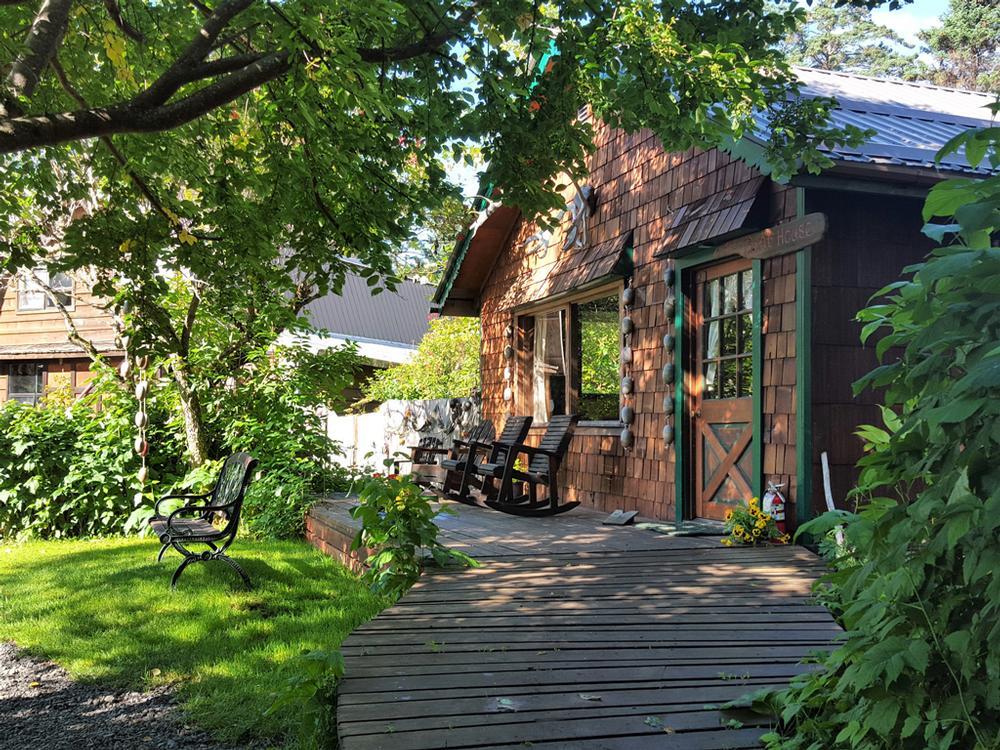
7. Kachemak Bay Wilderness Lodge
This is one of my favorite places to escape because of total seclusion and breathtaking natural beauty. Tucked along the shores of Kachemak Bay in Alaska, just across the water from Homer, I thought this was one of the most unusual and unforgettable hidden gems I’ve ever discovered.
We flew into Homer, Alaska, a small town perched on the edge of the Kenai Peninsula, and then boarded a boat that carried us across Kachemak Bay. Kachemak Bay Wilderness Lodge itself is small and intimate, with just a handful of guests at a time, so it felt like a very. private stay.
Our cabin for five wonderful days was rustic, with warm wood interiors, and large windows with a view.
- Location: Kachemak Bay, Alaska, across the bay from Homer on the Kenai Peninsula, accessible only by boat or floatplane
- Location Map
- Check prices or availability at Kachemak Bay Wilderness Lodge
What I loved best:
The food was a real standout, with lots of fresh local seafood, and local garden vegetables.
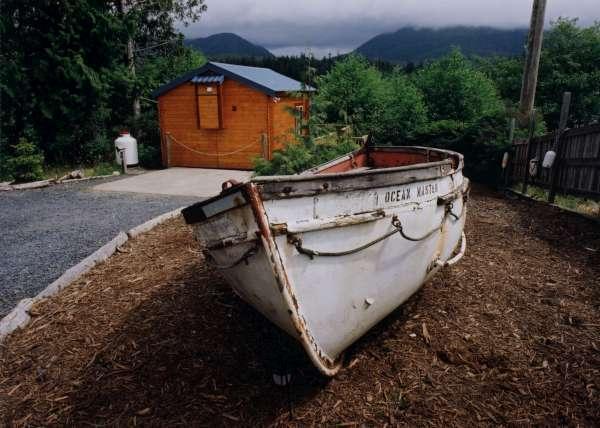
8. Anchors Inn, Ucluelet
This is one of my favorite places to escape because it gives you that perfect blend of oceanfront calm and rugged West Coast beauty.
We drove along the wild edge of Vancouver Island (about 5 hours from Vancouver, BC!), winding past the rugged coastline until we reached the little fishing village of Ucluelet.
I loved the way Anchors Inn sat right at the water’s edge there in a cluster of cozy oceanfront suites tucked into the forest.
My suite for four days overlooked the harbor, with fishing boats in the view. I loved waking up to the sound of gulls when taking a summer afternoon nap.
- Location: Ucluelet, British Columbia, on the west coast of Vancouver Island near the Pacific Rim National Park Reserve
- Location Map
- Check prices or availability at Anchors Inn.
What I loved best:
In the evenings, we’d sit out on the deck wrapped in blankets, watching the colorful subset, my personal highlight.
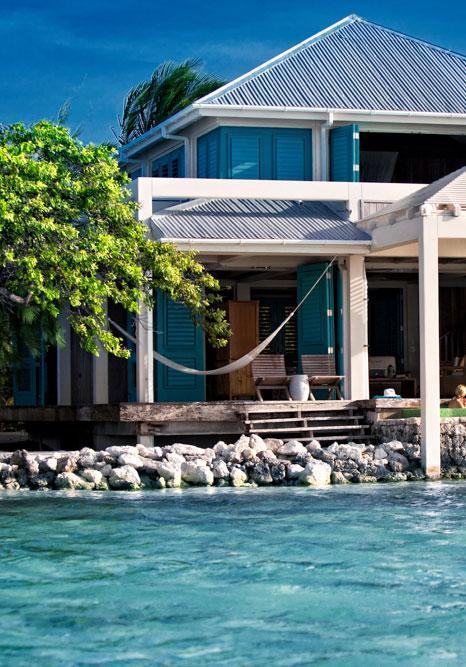
9. Cayo Espanto
This luxury island off the coast of Belize was unlike anywhere I’ve ever stayed. From the moment we arrived by boat, I knew this was going to be a spectacular experience and one of my favorite secluded romantic getaways!
We had our own private villa for three days, called Casa Manana, with 1,500 square feet of space right on the ocean. I loved that the villa was right on the ocean, with a private dock and a private plunge pool (a true indulgence!).
The place completely won me over because everything felt personalized, from customized meals to excursions designed just for us.
You can trust that this is a special resort because it's ranked #2 in the “Best of Central America Resorts” in the Condé Nast Traveler Readers’ Choice Awards.
We spent an hour each afternoon snorkeling right from our villa - The reef was alive with coral and colorful tropical fish.
One of my favorite memories was lounging in a hammock over the water for a hour (or two!), while time slowed down in this hidden slice of paradise.
- Location: Off the coast of San Pedro, Belize, on a private island in the Caribbean Sea near Ambergris Caye
- Location Map
- To book, check availability or prices for Cayo Espanto
What I loved best:
My favorite highlight was when the sun set, I felt completely immersed in the magic of the island, especially when lanterns lit up and dinner was served under the stars.
Booking with Absolute Belize is like having an insider friend who knows all the secrets. In addition, they tailor every piece of your itinerary.
If you loved this resort, check out my other favorite tropical tropical island vacation ideas.
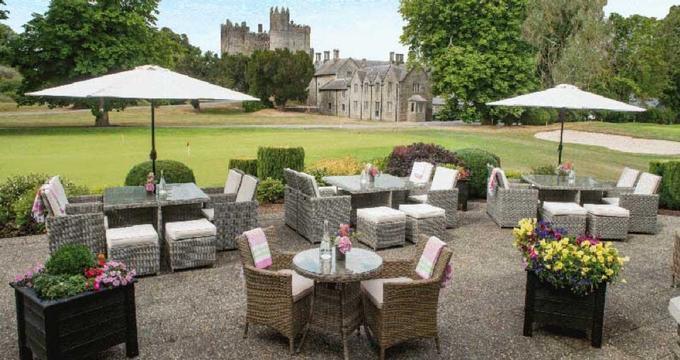
10. Kilkea Castle in Ireland
To me, this castle is one of the best places in Ireland for a secluded getaway. In fact, if you are looking for romance like we were, this historic gem has it in spades!
For me, Kilkea Castle was a place that feels like stepping straight into a fairytale. Tucked away in County Kildare, just about an hour from Dublin, this 12th-century castle has been transformed into a luxurious hotel and spa.
What I loved most was how Kilkea Castle combines history with modern comfort (plus the surrounding scenery of The Emerald Isle is enchanting!).
The castle itself has a storybook quality with its grand stone walls, lush gardens (if you go in the warmer season like we did!), and an old-world charm that instantly transports you back in time.
Inside, though, our guest room for two days was spacious, stylish, and cozy, with a cosy bed, elegant décor, and all the modern amenities you’d want.
My favorite part was waking up to views of the rolling Irish countryside, which had a touch of magic to it.
The castle grounds are equally impressive and perfect for a vacation that un-plugs you from the ordinary life. Why? I loved that I could wander the woodlands, explore the gardens, or simply relax by the fire in one of the elegant lounges.
For more activity, there’s an 18-hole championship golf course, horse riding, falconry, and even archery (which I tried for the first time here and loved!)
The spa was another highlight for me, and I went the first chance I had for a classical 60-minute massage.
To book, check availability or prices for Kilkea Castle.
What I loved best:
I thought that Kilkea Castle was one of the best secluded romantic getaways, yet surprisingly easy to get to just an hour's drive from Dublin.
The dining experience was unforgettable and a real standout. From fine dining in the grand restaurant to cozy pub fare in the on-site bistro, every meal was romantic and just perfect on our anniversary trip!
A downside? Be ready to drive on the left or call the hotel concierge and ask them to help arrange transportation from the airport!
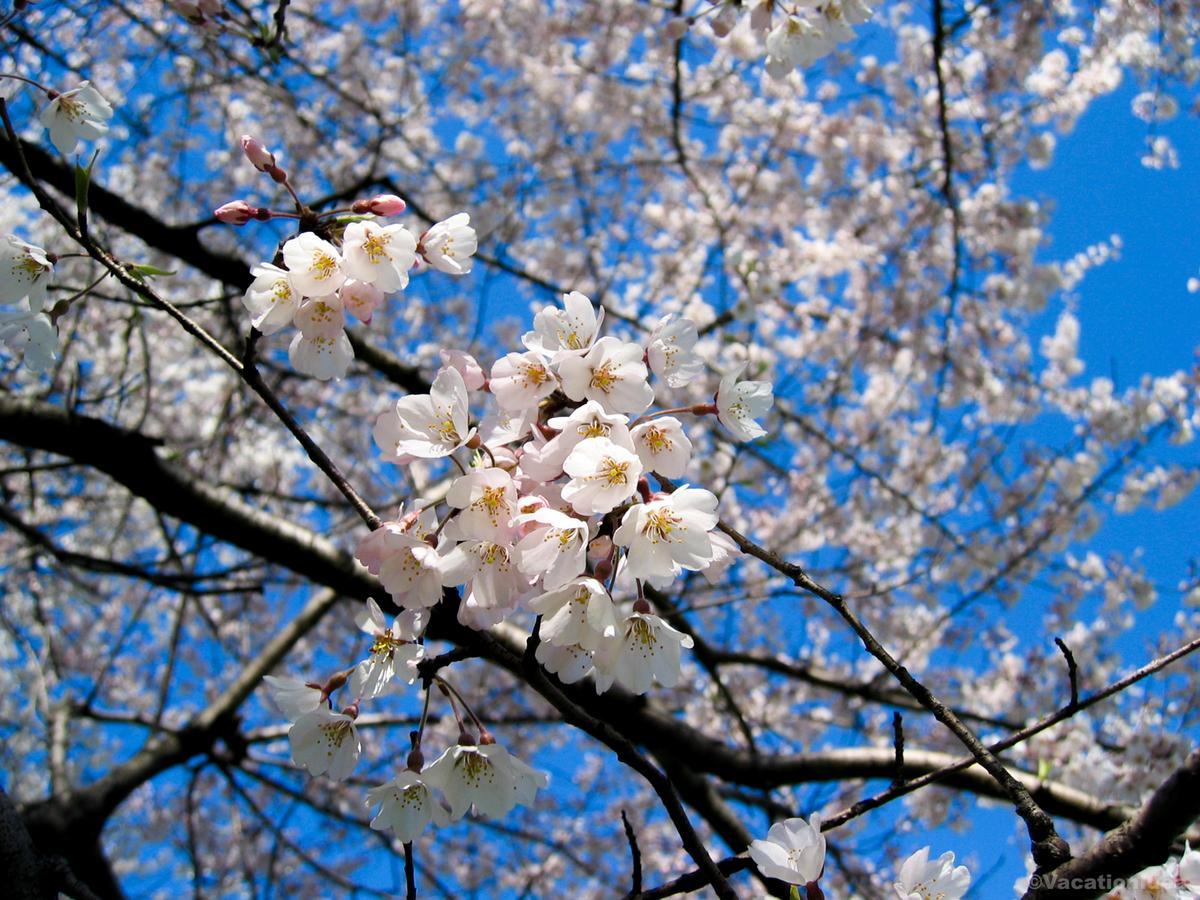

11. DDG Retreat, Costa del Sol, Spain
Hidden away from the busy beaches yet still close enough to explore Marbella or the charming whitewashed village of Casares, this place felt like a secret paradise that only a few travelers stumble upon! When I first arrived at DDG Retreat in Casares, tucked into the hills of Spain’s Costa del Sol, I instantly knew this was one of the most unique and romantic honeymoon spots I had ever seen.
From Málaga, we drove 65 miles southwest (about 1 hour 15 minutes) into the whitewashed village of Casares, perched in the Sierra Bermeja mountains (population around 6,000) where we stayed at DDG Retreat for four nights.
What I loved most was the atmosphere. This boutique retreat combines eco-luxury with a dreamy, intimate vibe. Our villa for a week, surrounded by a lush hillside, felt private, stylish, and absolutely perfect for a romantic getaway. My favorite part was the infinity pool (of course!) that looked out over the Mediterranean coastline, with views stretching all the way to Gibraltar and even Morocco on clear days. Honestly, it was spectacular.
I thought the unusual design of our villa was so exciting. Some villas had outdoor stone baths, others had plunge pools, and all came with chic, modern touches that made them feel vibrant and cozy at the same time. It was the best mix of comfort and exotic flair. We spent mornings doing yoga in the open air, afternoons sipping wine on the terrace, and evenings under the stars in complete tranquility. It truly felt like a dream.
- Map & Directions
- Check prices at DDG Retreat
What I loved best:
I think this is the absolute best hidden gem in southern Spain for a honeymoon or a romantic getaway. Why? It’s intimate, eco-conscious, and full of magic—an underrated escape that’s all about love, relaxation, and creating joyful memories in one of the most beautiful corners of Europe.
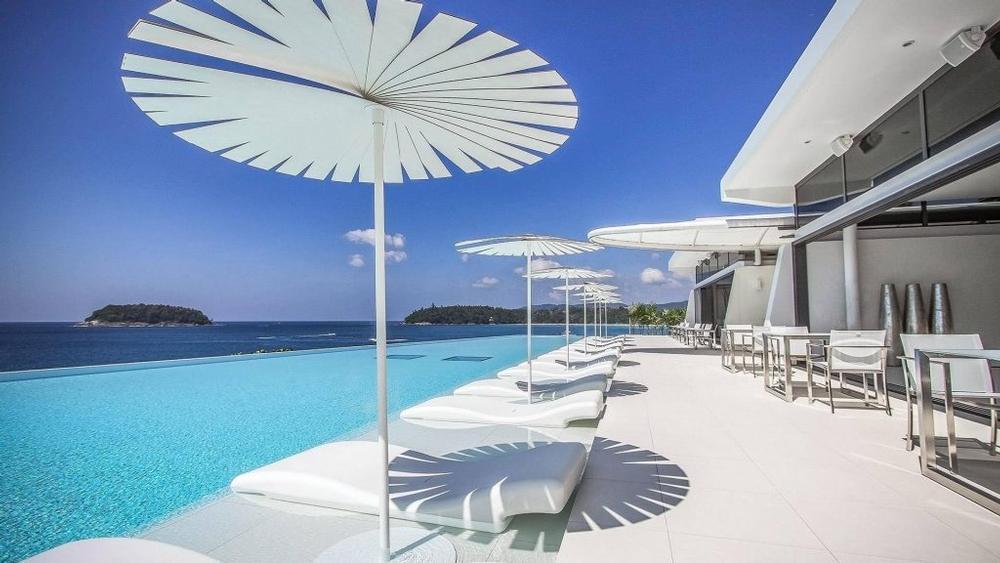
12. Kata Rocks Resort and Residences
This Phuket resort is one of my favorite luxury romantic escapes in Thailand, an underrated gem that blends sleek, modern design with breathtaking ocean views.
I drove about an hour south from Phuket International Airport along winding coastal roads to Kata Rocks, a sleek resort perched above the Andaman Sea. From the moment I arrived, I was struck by the resort’s striking architecture. Everything feels open, airy, and designed to highlight the turquoise waters of the Andaman Sea.
Our villa for a blissful week was truly a dream—spacious, with floor-to-ceiling windows, a private infinity pool, and a sun-drenched terrace that quickly became my favorite spot to watch the sunset.
Inside, I loved the modern amenities, from the fully equipped kitchen to the smart technology that made everything effortless.
The spa was a highlight, offering world-class treatments in a serene setting that felt both calming and indulgent.
I found it to be the best way to recharge after a day in the sun. For dining, the resort’s restaurant stood out, serving a mix of Thai and Mediterranean-inspired dishes with an emphasis on fresh, local ingredients.
To book, check availability or prices for Kata Rocks Resort.
What I loved best:
For me, Kata Rocks Resort and Residences is one of the best secluded getaways for couples. It's romantic, peaceful, and a scenic escape I can’t wait to return to!
Relaxing while the sky turned pink was easily one of my favorite moments of the trip. I also loved how private and exclusive the resort felt, yet it was only minutes away from Kata Beach’s lively scene. That balance of seclusion and convenience made it wonderful.
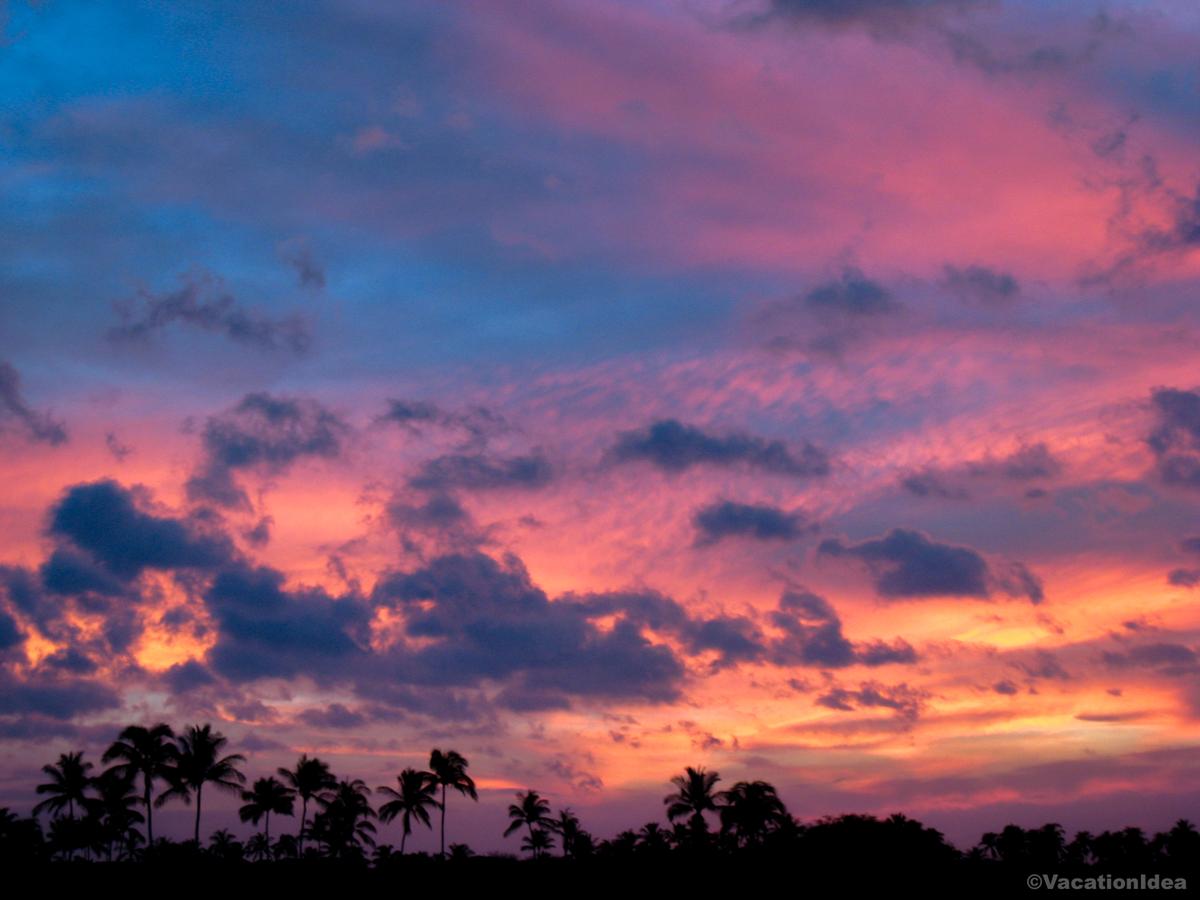
Booking Checklist
1. Book Your Flight - I use Expedia because I like their mobile app with my itinerary. They've helped me re-book flights on many occasions. Once you reach their Gold tier, support is especially good.
2. Book Your Hotel - I use Booking.com or Expedia, depending on my destination.
3. Book Your Rental Car - I use Expedia.
4. Book your tours on Viator or Get Your Guide.
5. If you are planning to visit more than three national parks in the next 12 months, buy the America the Beautiful Pass.
